Alma Mary Vadnais and Lewis Charles Heckel (part 1)
My grandaunt Alma Mary Vadnais was the only girl, and the last of 7 children born to then 25 year old Eugenia (Jennie Baillargeon) and 28 year old William Vadnais. When Alma was born on February 15, 1892 she joined her 6 brothers: 8 year old Joseph (Joe), 7 year old William Francis, 5 year old Edmund, 3 year old Harvey, 2 year old Adlore (my grandfather) and 1 year old Amis. With 7 children all less than 10 years of age Jennie and William must have had their hands full!

Alma was baptized by Father F. Lee at the Church of St. Mary of the Lake in White Bear on February 21, 1892. Her sponsors (godparents) were husband and wife, Joseph Labelle and Josephine Baillargeon, Alma’s uncle and aunt.2
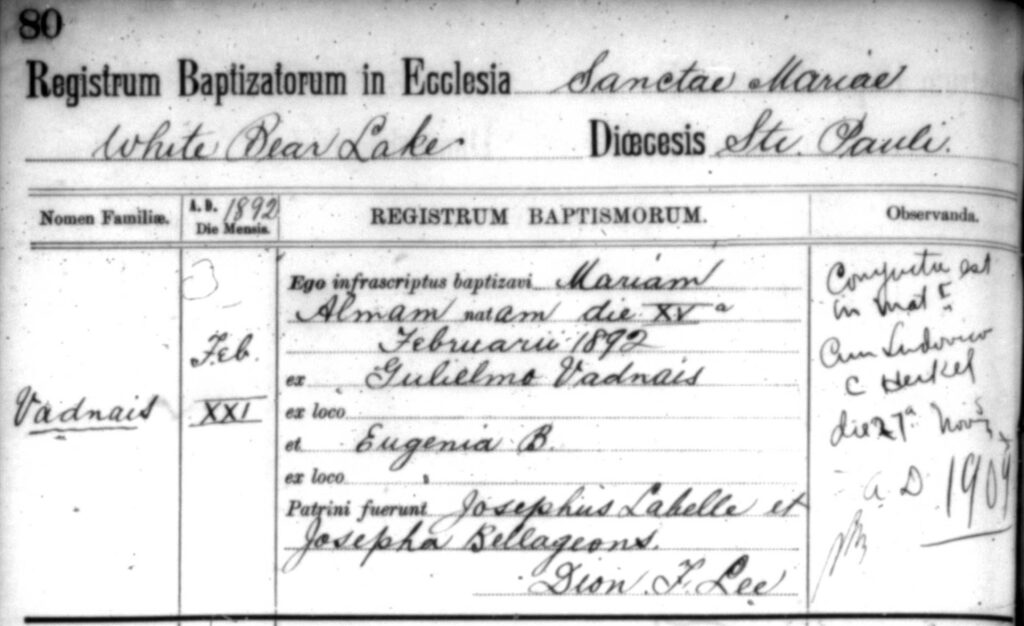
The 1905 Minnesota census enumerates 13 year old Alma as a student.3 Her father William has abandoned the family, Amis has passed away and her 5 surviving brothers are all working.4 Her mother and brothers must have cared deeply about Alma continuing her education during a difficult period of time for the family; they had not been afforded the same. I don’t know how many grades she actually completed except for the information she provided on the 1940 U.S. census where it shows the 8th grade as the highest grade completed.5
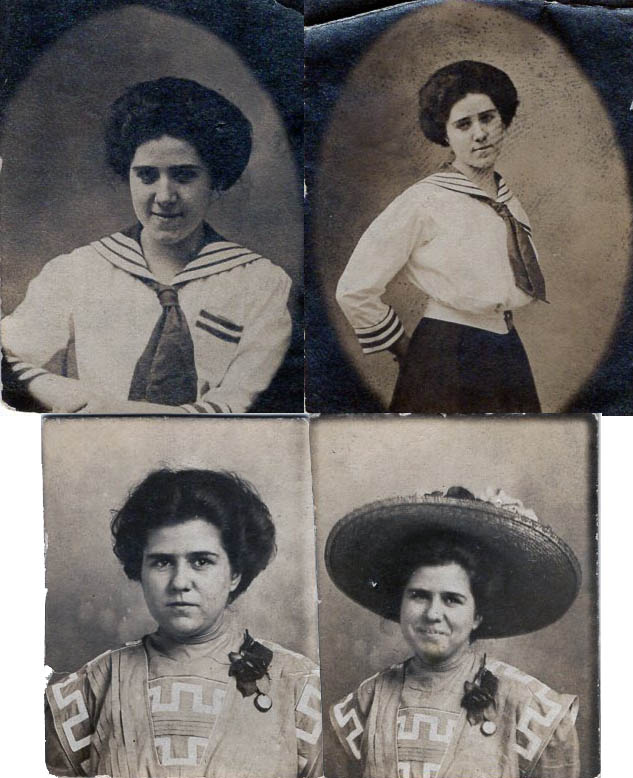
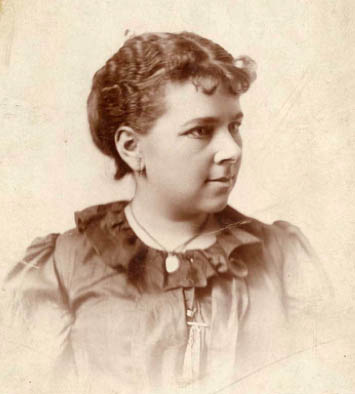
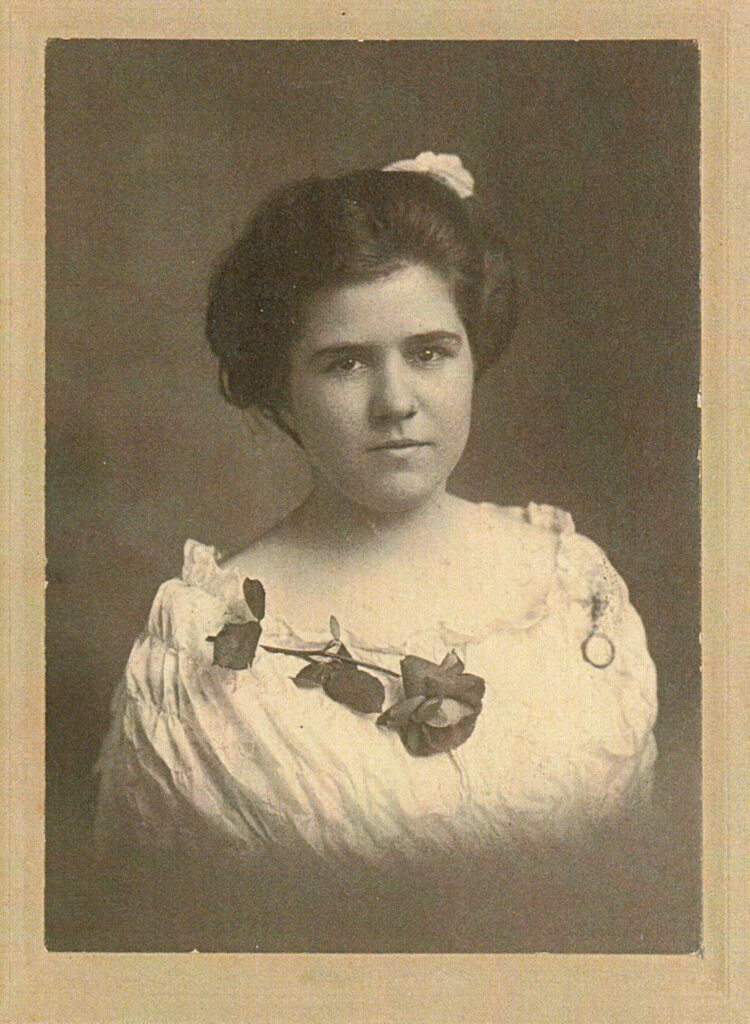
Alma’s future husband, Lewis (Lou) Charles Heckel was born in Minnesota on August 27, 1877.6 He was the 4th of 5 children (maybe 6 children) born to Mary Anne (Padden) and Frederick Joseph Heckel. Lewis (his baptism record shows Ludwig) was baptized on September 16, 1877 at the Church of the Assumption in St. Paul, Ramsey County, Minnesota by by Father Simplicius Valentine Stimmler. His sponsors were Ludwig and Anna Marie Rebholz.7
Lewis’ family came to Minnesota from New York in about 1876. The 1880 U.S. census enumerates them as living in Mendota, Dakota County, Minnesota where Lewis’ father is farming.8 By the 1885 Minnesota census the family is enumerated as living in Grant, Washington County, Minnesota.9 The Heckel family had actually moved to the area in 1883 when they purchased a lot from A. Kirby Barnum in his Dellwood plat; Lewis was about 5 years old at the time.10
The August 11, 1889 St Paul Globe, “White Bear Wave’s” section stated that, “Mr. and Mrs. Frederick Heckel had a lawn party at their “Hillside cottage,” Dellwood, on Thursday evening. The lawn was nicely illuminated, and the large number of friends present enjoyed themselves immensely.11”
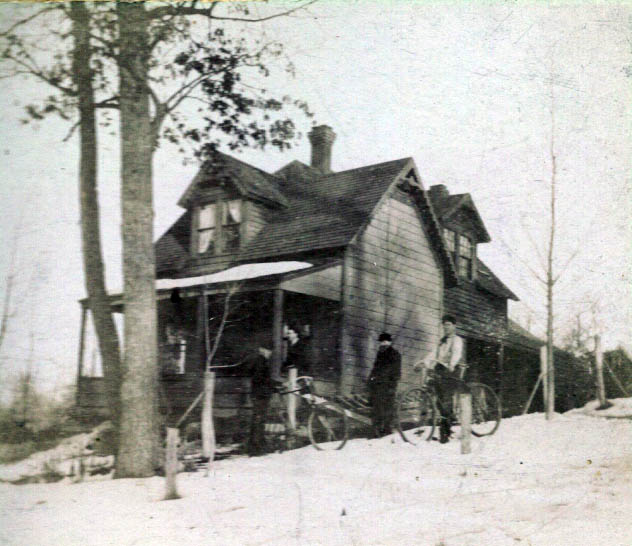
I believe the man second from the right is Frederick Heckel
When I saw the bicycles in the picture, it reminded me of a court record I found involving Lewis. It seems that when bicycles started to come into wide use, people and horses were terrorized, which led to laws being enacted regarding their usage. This particular court record was dated November 1, 1896 and involved the Village of White Bear against Louis [Lewis] Heckel and Harry Goheen. Apparently Lewis and Harry had violated a few village ordinances while riding their bicycles. The court record charged the “said defendants with the offence of having used, rode upon and propelled each for himself a certain vehicle known as a bicycle upon that part of certain streets of said village known as the sidewalks…” This lawlessness had violated 2 ordinances to which the 2 defendants pled “guilty.” The judge determined that each of them shall “pay a fine of one dollar together with the costs of prosecution, one dollar and 80 cents, or be imprisoned in the common jail of this county for the term of 5 days each.” It concluded with, “Said fine and costs were paid and the prisoners were discharged from custody.13” Lewis’ bicycle riding continued throughout his life. However, it appears that his life of crime did not.
The 1900 U.S. census enumerates 22 year old Lewis as a boarder under the roof of William Leip, proprietor of the Leip House (a large resort) at Lakeshore, the current area of Kowalski’s grocery store in White Bear Lake.14 I believe Lewis’ occupation is steamer engineer; in other words, he is the pilot of a steamer on White Bear Lake, probably one associated with the Leip House.

Lewis’ entrepreneurial spirit emerged in 1904. J. E. Ramaley, A. J. Diamon, H. M. Darling, Lewis and N. Ramaley incorporated “Ramaley Boat Building and Navigation company.15” Lewis had invested in the boat building business. The company had already been in operation on the lake since 1895 and appeared to be raising capital.
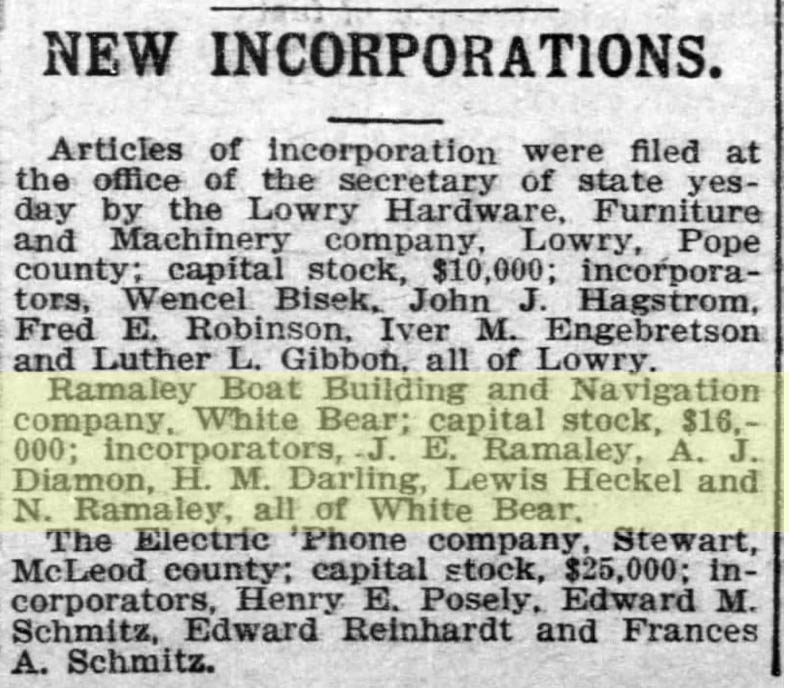
In the 1905 Minnesota census Lewis is running a bowling alley at Lakeshore.16 According to one of Lewis’ grandsons, “Grandpa Lou built a bowling alley, Lew’s Alley’s in White Bear Lake. He began building it April 3, 1905 and the alley opened May 6, 1905.17”
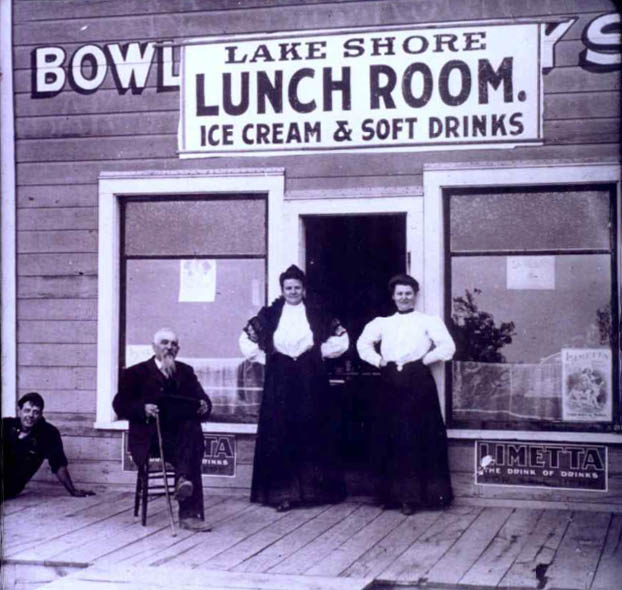
at Lakeshore in White Bear Lake
Courtesy of the White Bear Lake Area Historical Society
On June 21, 1905 Lewis, at 27 years old, married 18 year old Lena M. Cardinal.18 There son, Lewis Charles Jr. (according to the birth register), but baptized as Alwin Francis, was born on July 1, 1906 and died September 15, 1906.19,20 Lena passed away on January 7, 1908 after being sick for about 2 years with tuberculosis; Lewis was a widower at 30 years old.21
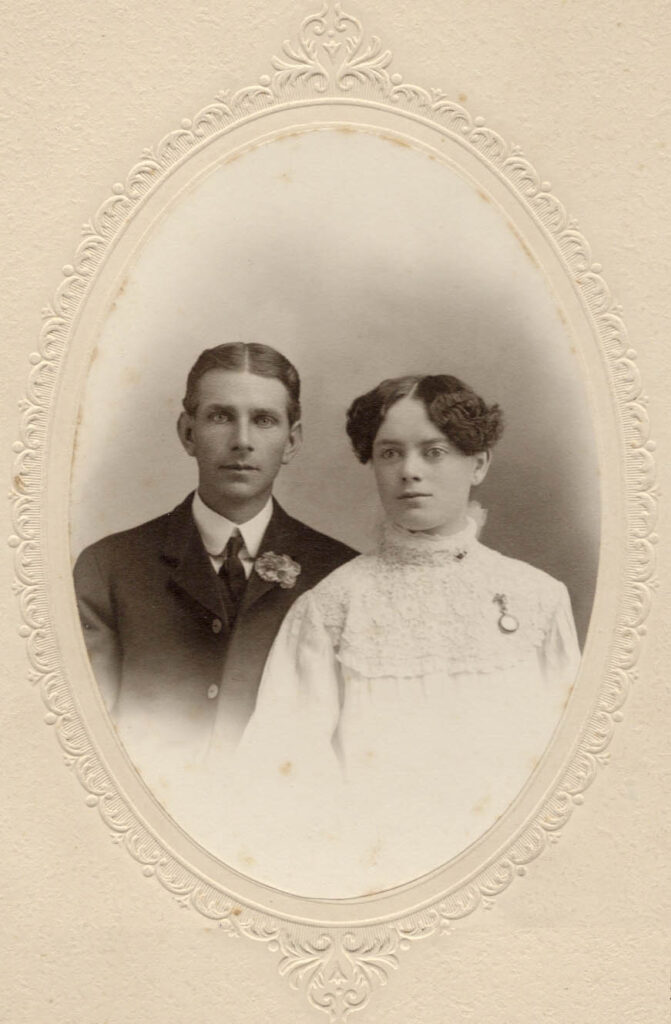
On November 27, 1909 Lewis married Alma Vadnais at the Church of St. Mary of the Lake near her home in White Bear.22 Lewis was 32 years old and Alma was 17 years old.
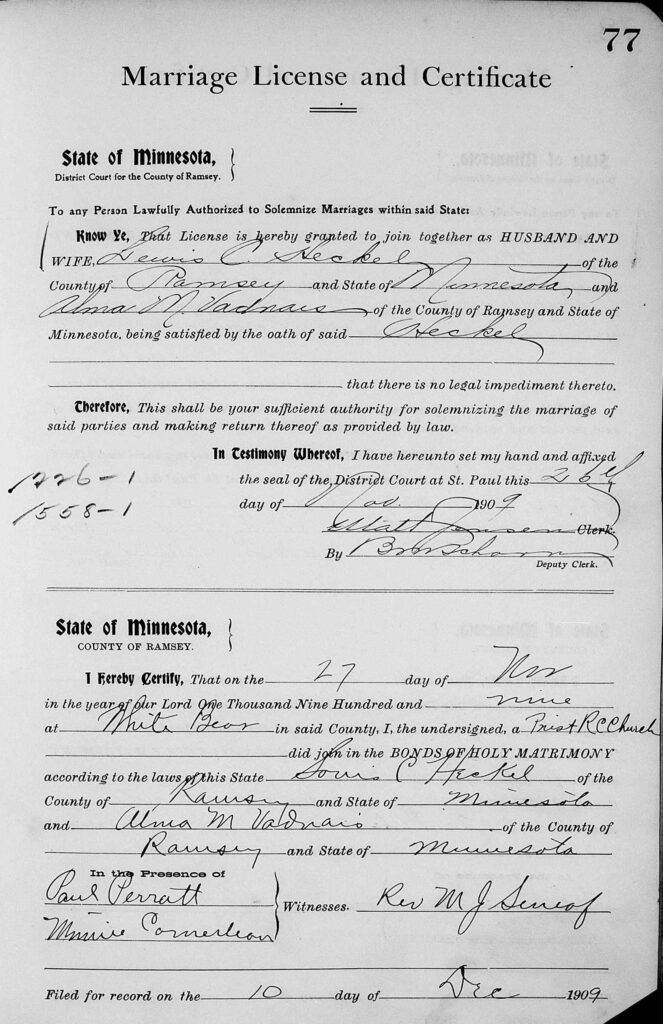
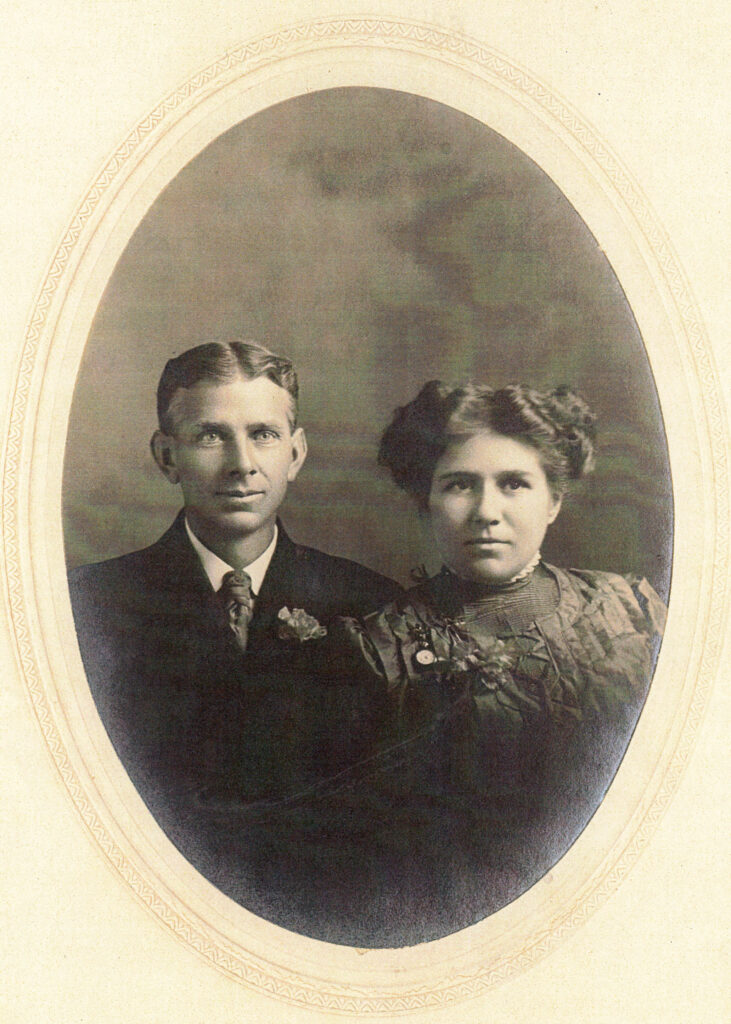
To be continued…
Thanks for visiting, come back soon,
Cynthia
© 2024 Copyright by Cynthia Vadnais, All Rights Reserved
Footnotes for Alma Mary Vadnais and Lewis Charles Heckel post
Alma Mary Vadnais and Lewis Charles Heckel (part 1) Read More »
